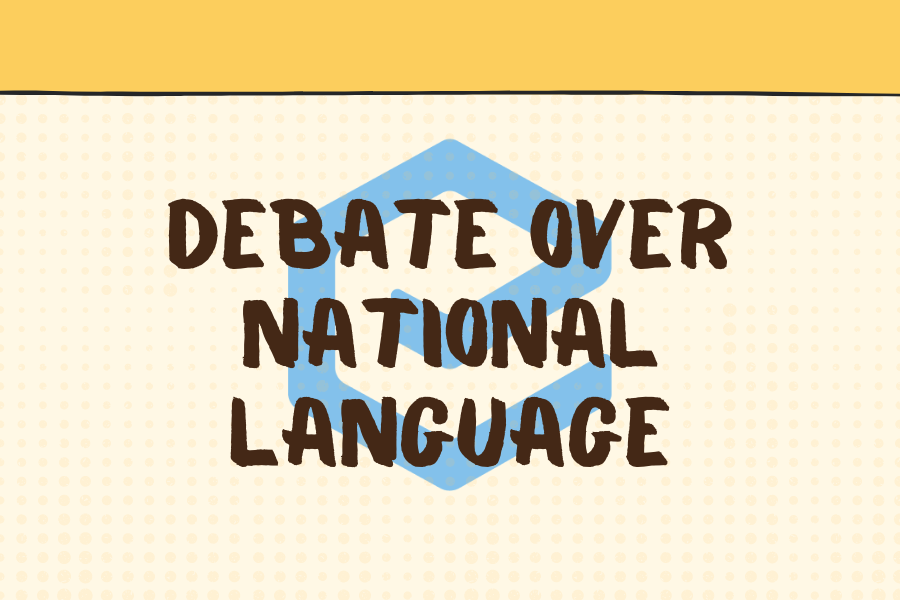
The debate over establishing a national language has been a perennial point of contention across many nations worldwide. Advocates argue that a common language fosters unity, streamlines communication, and promotes national identity. Conversely, opponents raise concerns about cultural diversity, linguistic rights, and exclusionary practices. This debate is not merely linguistic but also touches upon issues of politics, culture, and identity, reflecting the complex interplay between language and society. As societies grapple with globalization, immigration, and multiculturalism, the discussion surrounding a national language continues to evolve, reflecting shifting societal values and priorities.
The language issue was indeed a significant aspect of India’s post-independence period. Here’s a summary of the key points:
- Languages at Independence: At the time of Independence, India was a linguistically diverse nation with eleven major languages spoken by more than a million people each.
- Debate Over National Language: With independence came the question of choosing a ‘national’ or ‘official’ language to replace English, which had been the colonial-era official language. Gandhi advocated for Hindustani as a means of national integration, a language that was neither too Sanskritised nor too Persianised. Nehru also recognized the potential of Hindustani for this purpose.
- Resistance to Hindi: The idea of making Hindi the national language faced strong opposition from non-Hindi-speaking regions, particularly in southern and eastern India.
- Language Committee’s Compromise: To address the resistance, the Language Committee of the Constituent Assembly proposed a compromise. It decided that Hindi in the Devanagari script would be the ‘official’ language, but the transition would be gradual. For the first fifteen years, English would continue to be used for all official purposes. Provinces were given the option to choose a regional language for official work within the province, and these languages were listed in the Eighth Schedule of the Constitution.
- Official Languages Act of 1963: This Act clarified the language policy further. It stated that Hindi would become the official language in 1965. However, English was given the status of ‘associate additional official language’ to accommodate non-Hindi speakers.
- Resentment and Demonstrations: Despite these provisions, resentment against Hindi, particularly in south India, continued. This led to violent demonstrations in late 1964 and early 1965.
- Official Languages (Amendment) Act of 1967: This Act provided a bilingual solution for official communication between the Centre and states (English-Hindi). It also recognized regional languages in provincial administration and public service examinations, acknowledging the diverse linguistic landscape of India.
The language issue was a sensitive and complex matter, and the policies and compromises made during this period aimed to strike a balance between promoting linguistic diversity and fostering national unity.
Contents
FAQs
Q: What is the debate over having a national language?
A: The debate over having a national language revolves around whether a country should adopt a single language as its official or primary language. Advocates argue that it promotes national unity, cultural preservation, and facilitates communication. Opponents, however, raise concerns about linguistic diversity, discrimination against minority languages, and the potential exclusion of non-native speakers.
Q: Why do some countries have a designated national language?
A: Countries designate a national language for various reasons, including historical, cultural, and political factors. It can symbolize national identity, strengthen social cohesion, and streamline government operations. Additionally, a national language often serves as a medium for education, administration, and legal proceedings, enhancing efficiency and effectiveness in governance.
Q: What are the implications of imposing a national language?
A: Imposing a national language can have both positive and negative implications. On the positive side, it can foster a sense of belonging, promote linguistic unity, and facilitate communication within the country. However, it may also marginalize minority languages, suppress linguistic diversity, and create barriers for non-native speakers, potentially exacerbating social inequalities and cultural tensions.
Q: How do countries address linguistic diversity within the context of a national language?
A: Countries with linguistic diversity often adopt policies to accommodate multiple languages while still upholding a national language. These policies may include bilingual education, official recognition of minority languages, and measures to preserve and promote linguistic heritage. Additionally, some countries implement language rights laws to ensure equal access to services and opportunities for speakers of all languages.
Q: Can a country function effectively without a designated national language?
A: Yes, a country can function effectively without a designated national language by embracing linguistic diversity and implementing inclusive language policies. In such cases, multiple languages may enjoy official status or recognition, fostering multiculturalism and respect for linguistic rights. However, effective communication across diverse linguistic communities remains essential, often requiring bilingual or multilingual approaches in governance, education, and public services.
In case you still have your doubts, contact us on 9811333901.
For UPSC Prelims Resources, Click here
For Daily Updates and Study Material:
Join our Telegram Channel – Edukemy for IAS
- 1. Learn through Videos – here
- 2. Be Exam Ready by Practicing Daily MCQs – here
- 3. Daily Newsletter – Get all your Current Affairs Covered – here
- 4. Mains Answer Writing Practice – here

